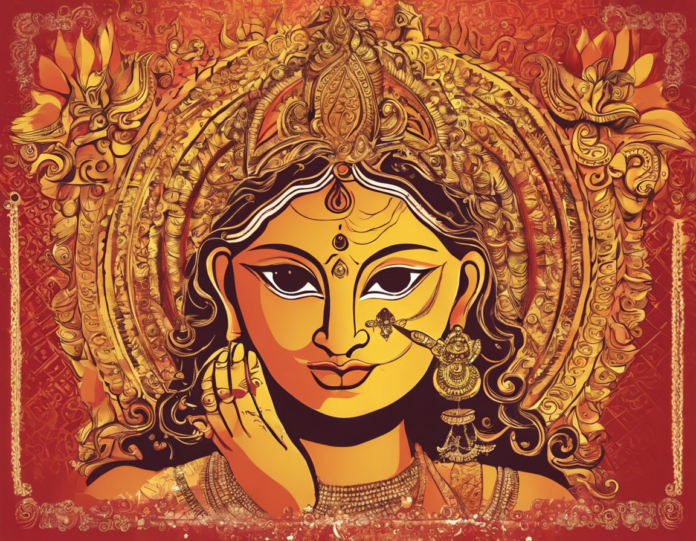Introduction:
Durga Puja is an annual Hindu festival celebrated predominantly in the Indian subcontinent, particularly in the state of West Bengal, India, and Bangladesh. This festival commemorates the victory of the goddess Durga over the buffalo demon Mahishasura. The festival typically falls in the month of September or October, marking the onset of autumn in the region.
History and Significance:
Durga Puja traces its origins back to the ancient scriptures of Hinduism, where goddess Durga is depicted as a powerful deity symbolizing the feminine energy (Shakti) that triumphs over evil. According to legend, the gods and goddesses of the Hindu pantheon created Durga to defeat Mahishasura, a demon who wreaked havoc on Earth. Durga’s victory is celebrated during this festival, symbolizing the triumph of good over evil.
Celebrations and Rituals:
The festival typically spans over five days, with elaborate rituals and festivities. The preparations for Durga Puja start months in advance, with communities coming together to build temporary structures called ‘pandals’ to house intricately designed idols of Durga. These idols are crafted by skilled artisans and are often the centerpiece of the celebrations.
On the first day, known as Mahalaya, people offer prayers to their ancestors and invoke the goddess Durga. The following days involve various rituals, including ‘Saptami’, ‘Ashtami’, and ‘Navami’, where devotees offer prayers, perform traditional dances (known as ‘dhunuchi naach’), and participate in cultural programs.
Colors and Decorations:
One of the striking aspects of Durga Puja is the vibrant colors and decorations that adorn the pandals and idols. The idols of Durga and her children are dressed in elaborate outfits and adorned with jewelry, symbolizing the goddess’s divine presence. The pandals themselves are a sight to behold, with each community striving to outdo the other in terms of creativity and grandeur.
Cultural Significance:
Durga Puja is not just a religious festival but also a celebration of culture and community. It brings together people of all ages and backgrounds, transcending social barriers. During the festival, the streets of Kolkata and other cities come alive with music, dance, and art, creating a festive atmosphere that is unparalleled.
FAQs:
Q1: What is the significance of Durga Puja in Hindu mythology?
A: Durga Puja celebrates the victory of goddess Durga over the demon Mahishasura, symbolizing the triumph of good over evil.
Q2: How long does Durga Puja last?
A: Durga Puja typically spans over five days, starting with Mahalaya and ending with Dashami.
Q3: What are some traditional foods eaten during Durga Puja?
A: Traditional foods include bhog (prasad), khichuri, labra (mixed vegetable dish), and sweets like sandesh and rosogolla.
Q4: Can non-Hindus participate in Durga Puja celebrations?
A: Yes, Durga Puja is a festival that welcomes people of all backgrounds to join in the celebrations and experience the rich cultural heritage.
Q5: What is the significance of the dhunuchi naach dance during Durga Puja?
A: Dhunuchi naach is a traditional dance performed with a smoking earthen pot, symbolizing offering prayers to the goddess with devotion.
In conclusion, Durga Puja is not just a religious event but a cultural extravaganza that showcases the rich heritage and traditions of the Indian subcontinent. The festival’s vibrancy, colors, and fervor make it a unique celebration that is cherished by millions of people worldwide.













